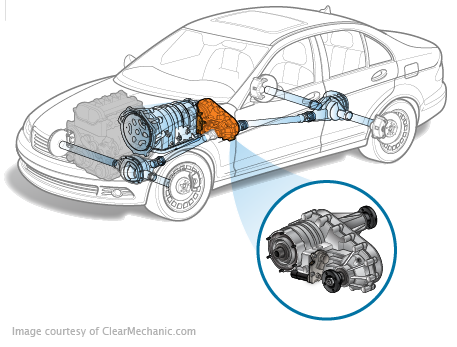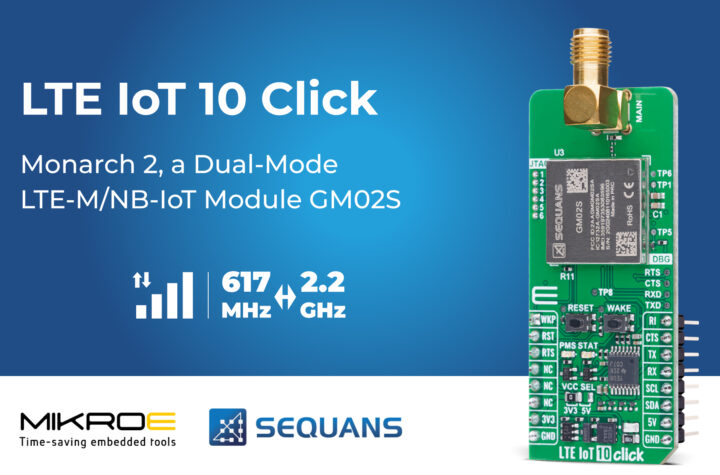

In the last decade INCHRON GmbH has made huge strides in helping engineers design robust, bug-free software and hardware architectures. One of the biggest challenges for system developers and engineers is to assess the real-time behavior of their systems and networks in the face of increasing complexity. INCHRON supports system architects and engineers from the earliest stages of a design project in making decisions that result in improved product quality and reliability. And since performance demands increase faster than hardware costs decrease, manufacturers are challenged to provide highly functional products at affordable prices. INCHRON’s solutions ensure reduced engineering labor costs and an optimized system and software design configuration. Finally, INCHRON’s products help to reduce the number of re-design cycles, which directly reduces time-to-market.
For the automotive industry, INCHRON’s solutions are critical at a time when the competitive edge is gained by how sophisticated and cost effective systems in vehicles are. “Today’s automobiles have a number of interconnected systems which rely on each other for functionality. Yet there are a number of factors that determine if the systems work together. What if the infotainment system affects the performance of the anti-lock brakes or the timing of the airbag deployment? Automobile manufacturers and suppliers must understand the interactions and validate the functionality, timing and safety of their systems or face redesign and safety issues,” says Dr. Ralf Münzenberger, one of INCHRON’s founders.
Since the company was founded in 2003, INCHRON has attracted an impressive list of automotive clients including some of the biggest names in the industry such as Audi, BMW, Continental Automotive, Daimler, General Motors, Johnson Controls, Robert Bosch and Volkswagen. INCHRON is particularly known for its combination of in depth know-how in processes and methodologies and cutting-edge products – chronSIM and chronVAL. The company’s set of solutions is aimed at engineers that architect, design and test embedded system software.
chronSIM is a development tool for the simulation, analysis and optimisation of real-time critical systems. The dynamic timing behaviour of embedded systems and networks is imitated in the simulator and displayed in clear diagrams. Using various analysis and output options, static and process-dependent execution paths can be investigated, forecasted and improved. chronSIM enables better control of the timing behaviour of complex, real-time critical systems, therefore ensuring a robust and reliable execution response. Real-time behaviour can be predicted in early architecture phases, resulting in robust architectures and making it easier to debug code later.
INCHRON’s chronVAL is a real-time analysis tool which enables designers to validate the worst case response times and real-time performance of distributed embedded systems using mathematical analysis methods. INCHRON points out that with increasing complexity of systems technology chronVAL has significant time and detail advantages over existing tools. Due to state of the art algorithms chronVAL delivers precise, meaningful results very fast. Because the hard- and software system architecture is modeled on an abstract level it is possible to understand and analyze the dynamics of highly complex embedded systems. “The unique integration of chronVAL real-time validation with the real-time simulator chronSIM provides the methods to catch all critical system situations. The simulation enables to understand in depth the dynamic behavior, while the analysis allows obtaining the guaranteed response times of the system,” says the company.
Thanks to a recent partnership with IBM both companies are now able to provide a comprehensive model- and simulation-based approach to systems engineering to address the complexities of electric and electronic (E/E) development. With this joint solution designers can integrate workflows and build models in parallel, allowing them to detect functional, timing and performance issues early on in the design.
INCHRON is a premium member of the AUTomotive Open System ARchitecture (AUOTSAR) development partnership. In July this year, INCHRON and ESG Elektroniksystem- und Logistik-GmbH, an engineering service provider for electronics and IT systems for a range of industries including the auto industry, signed a partner agreement. The goal for ESG is to enhance their service offering in an area of growing significance for its customers. The goal for INCHRON is to tap into new international markets and to broaden the scope of its consulting solutions. Dr. Ralf Münzenberger, Managing Director Professional Services at INCHRON, adds: “High integration density – keywords Domain-Controller and AUTOSAR – leads more and more suppliers to integrate multiple functionalities into one control unit where they previously had several units. This means that they need to determine real-time criteria early on in the specification phase in order to build a robust architecture and prevent unpleasant surprises during integration tests. ESG is a strong partner to help us implement this methodology in our customer solutions.”
Automotive Industries spoke to Matthias Dörfel, Founder and Managing Director R&D and Dr. Ralf Münzenberger, Founder and Managing Director Professional Services of INCHRON GmbH.
AI: Tell us about INCHRON’s strategy since 2003 to be a leader in the development of real-time critical software for embedded systems and networks.
Matthias Dörfel: When we founded the company in 2003 we were sure that increasing complexity in embedded systems would sooner or later lead to a growing need for solutions to master the dynamic behavior of those systems. Starting in our time as researchers at University Erlangen-Nuremberg and enforcing these activities with the VC investments we have developed a variety of powerful technologies to master the different angles of dynamic behavior in embedded systems. These developments are based on a solid IP strategy to secure our freedom to operate and support our competitive position.
Ralf Münzenberger: When in the beginning our strategy was driven by the technology developments and the IP strategy we clearly see now that our experience with respect to processes, methodologies and tools becomes an asset just as important as our IP base. Customers are interested in complete solutions and that is what we can provide with our unique combination of tools and know how.
AI: What are some of the changes you have seen and foresee in the development of automotive systems and how has INCHRON played and will play a role in this sector?
Ralf Münzenberger: It may sound like a stereotype but the major changes we have been seeing in the past and expect to see in the future are related to the explosion of complexity. This complexity arises not only on the product side but on the development ecosystem as well. There is a definite trend towards higher integration of ECU (Electronic Control Units) and the integration of software modules of multiple vendors including the OEM.
The only way to master this complexity and to manage risk early instead of dealing with problems late in the development process is to establish processes, methodologies and tool-chains that address those challenges. Our customers appreciate our unique combination of tools and know how in the area of dynamic real-time behavior.
Matthias Dörfel: From a product perspective, there are two aspects that we focus on. One is to constantly extend the capabilities and usability of our tool-suite. The ability to simulate and analyze multi-core architectures is an example but there are many more. In addition we put a lot of effort in integrating our tools into larger tool-chains and providing interfaces eg for AUTOSAR.
AI: Tell us about how INCHRON’s solutions are helping automotive system engineers and architects.
Ralf Münzenberger: Let me give you an example of a German OEM. In the past, they discovered timing errors rather late in the development process. Using our tools on the testing side, they were able to find these errors that occurred only sporadically. Now that they are facing the complexity issues in both technology and collaboration mentioned before they have decided to use our solutions from project start and even before in the bidding phase. We have just started to establish processes and methodologies that ensure a proactive management of real-time risks from the beginning. This leads to a change that will benefit all parties involved. When we did the first project with several suppliers in the bidding phase of a domain ECU, the suppliers were skeptical. Very soon however they realized that they benefit as well from clearer requirements and specifications. We are proud to say that we have initiated that development that now ignited interest at other OEM. At the end of the day all parties involved benefit from shorter time to market and reduced cost of quality.
AI: What role has INCHRON played in the AUTOSAR partnership?
Matthias Dörfel: When we decided to apply for premium membership in AUTOSAR, we were determined to provide know how in an area that had been neglected to some extent. Since early 2009 we are actively engaged in the timing workgroup and the architecture workgroup. Obviously that engagement has an impact on our product solutions as well. The same applies for our activities in the TIMMO project (TIMing MOdel).
Ralf Münzenberger: From a project perspective it is vital to keep the edge in customer needs. That’s why we engage our professional services engineers in the AUTOSAR workgroups and in TIMMO.
AI: Tell us about the work INCHRON has done and is planning to do with IBM in developing tools and products for the automotive industry?
Matthias Dörfel: Our cooperation with IBM Rational is an example where we develop integrations that cover various steps in the development process. Ralf just talked about the importance of requirements management. So having an integration with DOORS is an attractive option for a lot of our customers. Model based SW development in combination with Rational’s Rhapsody or quality management with Rational’s Quality Manager are other issues that we work on with IBM. With OSLC IBM provides an open standard used in the jazz platform that makes our lives and even more customer’s lives in integration a lot easier.
AI: What do you hope from INCHRON’s agreement with ESG Elektroniksysteme?
Ralf Münzenberger: As we have stated just a minute ago, it is the balanced combination of processes, methodologies and tools that ensure the success of electronics development. We just talked about AUTOSAR. Standards like SPICE, CMMI or ISO 26262 are just as important to ensure the level of quality that customers and regulatory institutions require. ESG provides a substantial scope in that area. ESG – and their customers – benefit from our know how in the area of dynamic real-time behavior. We benefit from being integrated in a solution package that covers the big picture.















More Stories
Automating ECU testing for automotive transfer cases using HIL
New LLC Switcher IC From Power Integrations Delivers 1650 W of Continuous Output Power
LTE IoT 10 Click Click board from MIKROE provides reliable IoT connectivity